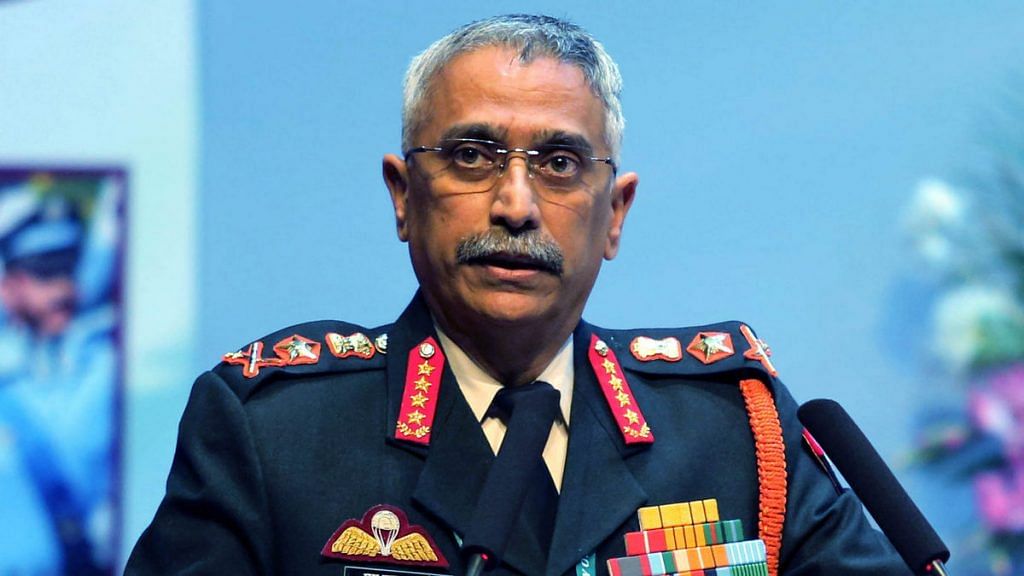New Delhi: Nepal’s objection to India’s newly-inaugurated road via the Lipulekh Pass in Uttarakhand is likely at the behest of “someone else”, Army Chief General M.M. Naravane said Friday, hinting at a possible Chinese role behind the row.
Addressing an online conference organised by the Manohar Parrikar Institute for Defence Studies and Analyses, a New Delhi-based think-tank, Naravane said the east of the Kali river is Nepalese territory while its west is Indian territory. “There is no dispute about that. The road we have built is west of the river.”
The Army chief also said he didn’t understand the purpose behind the agitation.
“I don’t know what they are actually agitating about. There has never been any problem in this Corps in the past. There is a reason to believe that they might have raised this problem at the behest of someone else and that is very much a possibility,” he said.
Last week, Nepal responded with alarm and anger, even handing out a diplomatic note to the Indian envoy in Kathmandu, after Defence Minister Rajnath Singh inaugurated the road up to Lipulekh, which has been built for pilgrims to Kailash Mansarovar. In a strong statement on 9 May, it also asked India to “refrain from carrying out any activity inside the territory of Nepal”.
Sources in the Indian defence establishment suspect China’s role behind Nepal’s move to raise objections. However, Kathmandu has rubbished such suggestions.
Also read: Nepal wants India to settle Lipulekh border issue before talks on new Kailash Mansarovar road
‘Face-off at LAC happen when new local commanders take over’
Meanwhile, the Army chief again sought to play down the face-offs last week between the Indian and Chinese troops at the Line of Actual Control in north Sikkim and eastern Ladakh.
Gen M.M. Naravane ruled out any larger Chinese ploy, a day after he issued a statement saying the two incidents were not linked, and everything is being resolved mutually as per established protocols and strategic guidelines given by Prime Minister Narendra Modi after the two informal India-China summits.
On Friday, the Army chief said such face-offs are very common and it is “business as usual”.
“In fact, you are coming to know where face-off has occurred… Daily we (Indian and Chinese troops) are meeting at 10 different places which is absolutely business as normal. It is only at one or two places where this has happened. And this does happen from time to time. It also happens when there is a change of commanders on ground,” he said.
“A new commander wants to show he is different from the others. There are a lot of dynamics on why a face-off occurs. All of a sudden, at a place where everything was business as usual in the past…” he added.
In the statement Thursday, the Army chief had said that “aggressive behaviour” by both sides resulted in “minor injuries” to troops.
ThePrint reported Thursday that Indian and Chinese armies are working out the dates for the next formal discussions between “higher” military authorities in the Ladakh sector to sort out the tensions arising out of the face-offs.
Last week, ThePrint reported that the situation in Sikkim was “resolved” while official “disengagement” took place in Ladakh even as additional troops were pressed in. Both sides are now stationed at their respective positions within their own territories, but additional part-time infrastructure has come up to house the additional soldiers.
Also read: India’s oldest flying aircraft in spotlight after radar website shows it going to Pakistan
